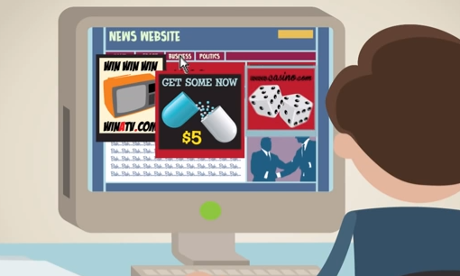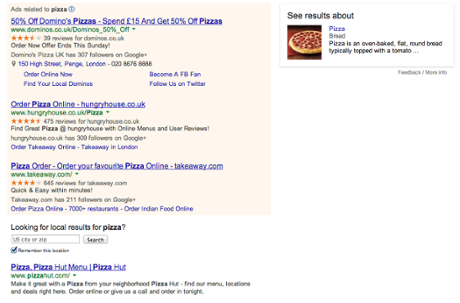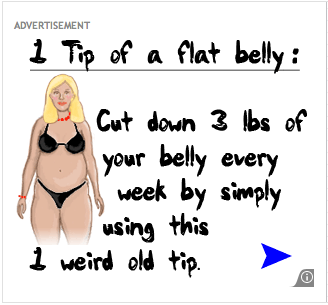Are Eyeo, developers of the Adblock Plus plugin, campaigning for better adverts, or just holding the web’s biggest businesses hostage?

The letter to Twitter, the US company preparing for a $15bn stock market flotation, sounded reasonable enough – if cheeky. “We would like to partner with you to engineer acceptable, non-intrusive advertising,” said the blogpost from Adblock Plus.
But the sentence’s continuation seemed to carry a veiled threat: “We want you to do it responsibly, by adhering to our Acceptable Ads guidelines.” And if Twitter doesn’t? Then it would remain on the list of sites where adverts are blocked by the browser add-on, which its developer – a Cologne-based company called Eyeo – claims has 30 million daily users, and has been downloaded 200m times.
Adblock Plus’s model is straightforward: unless a site is on its “whitelist”, then it blocks all the ads shown there. And, as it makes clear, even big websites whose advertising methods (text only, no flashy gimmicks) it finds acceptable must hand over a share of their advertising revenue for the reward of being on the “whitelist” and showing their ads to visitors. “Small” sites – the precise definition of “small” isn’t given – don’t have to pay if their ads are deemed acceptable.
Twitter declined to comment for this article on its thinking about Adblock Plus’s offer. But for the many sites which rely on advertising – not only Twitter, but Facebook, Yahoo and many media organisations (including the Guardian) – the idea of millions of desktop users not seeing the ads that pay a significant part of their bills is a problem. Yet the idea of paying the company which creates the problem to make the problem go away might not seem palatable either.
“First it blocks your ads, and then asks for money to unblock them”
“‘Shakedown’, ‘racketeering’ and ‘extortion’ are common terms publishers we’ve spoken with have used in relation to [Adblock Plus’s] ‘acceptable ads’,” says Sean Blanchfield of PageFair. His company provides analytical services for websites looking to find out how much they are losing to users of ad blockers. “We think this is very unfortunate, as acceptable ads are the only way to avoid more people choosing to install Adblock. The mafia comparisons are not helped by a lack of transparency around the financial terms of being on the whitelist.”
Even some users of Adblock Plus agree. “I think the ‘Acceptable Ads’ idea will only work out if there is no money involved,” wrote a user called “freakinvibe” on the plugin’s message board when the idea of the whitelist was first announced. “If you were a website owner, would you share the ad income with ABP? I don’t think so. First, ABP blocks your ads (without asking) and then asks for money to unblock them. Isn’t that extortion?”
Eyeo responds that “publishers and websites only participate by their own volition; those that have have been pleased with the results of non-intrusive advertising.” The company does concede that it has “initiated conversations” rather than just waiting for partners to approach it, but emphasises that “the order of approach is secondary to the process”.

So powerful is Adblock Plus that even the mighty Google, which relies on showing advertising for 90% of its revenues, has been forced to make a deal with the company to bypass its blockers. But in March it kicked Adblock Plus out of its Google Play store for Android phones, stating that it “interferes with or accesses another service or product in an unauthorized manner”.
A spokesman for Eyeo says it “can’t speak publicly about specific contracts”, but that “the service we offer paying websites gives them the opportunity to gain more revenue by producing better ads.” He said the fee, which is paid by less than 10% of applicants, “is the main part” of the company’s revenue stream.
Currently there are just 148 sites on the whitelist out of 777 which applied, according to a blogpost from Adblock Plus. For those which have to pay – which includes Google, Amazon and Yandex, Russia’s largest search engine – the fee for not having their ads blocked is reportedly the cash equivalent of 30% of the revenue generated by showing ads.
PageFair’s data shows that use of ad blocking software – of which there are a number of developers other than Adblock Plus, including Adblock and Adblock Edge – is increasing rapidly. In some particularly tech-savvy sectors, more than a quarter of site visitors block ads, but even general interest sites see between 15% and 20% of visitors using it.
“An ad that is displayed but ignored doesn’t provide value”
In March 2010, technology news site Ars Technica experimented with an outright ban on users who blocked ads. For 12 hours, they were redirected to a blank page, until Ars relented, with editor-in-chief Ken Fisher posting an explanation titled “why Ad Blocking is devastating to the sites you love”, saying: “Imagine running a restaurant where 40% of the people who came and ate didn’t pay. In a way, that’s what ad blocking is doing to us.”
Adblock Plus developer Wladimir Palant responded that Adblock Plus users were unlikely to click on adverts anyway. “An ad that is displayed but ignored doesn’t provide value.”
But sites are rarely paid “per click”. Instead, the standard metric for selling web display ads is “CPM”, or “cost per mille” – the cost for a thousand views. Even if users think that they are ignoring adverts, advertisers perceive a value in putting brands in front of them.
“In dollar terms, it would be typical to see a general-interest website lose 10%-15% of its revenue,” says Blanchard. “For a site that serves 10 million page views per day, with three ads per page, sold at a rate of $5 CPM, this could translate into daily losses of about $20,000.”

The one thing all sides agree on is that the current state of online advertising is deplorable.
“I’d put it like this,” says Patrick Smith, of TheMediaBriefing. “The TV adverts in between the action at the Superbowl in America are the most talked-about things in the country for a day or so after the event. People genuinely like them because they’re funny, interesting, cute or just generally interesting. In fashion magazines, the advertising is part of the content – there’s almost no distinction.
“But with web advertising we don’t yet have this commitment to quality: we have irrelevant, out-of-context flashing banners and low value ad network gifs about losing weight in one easy trick. We have rollovers that go ‘over’ without being ‘rolled’. There are autoplay video ads, and much else, to disrupt the experience.”
The debate isn’t about the aims of Adblock Plus, but the tactics. “I do think there’s something slightly sanctimonious about Adblock,” says Smith. “I wonder if they’d be more successful as a pressure group campaigning to make the web better, rather than a tollbooth for online content.”
“Ironically… Adblock Plus is itself funded by advertising, via the whitelisted publishers,” adds Blanchard. “Overall, I think it would be best for the Acceptable Advertising movement if an alternative business model could be found.”
But the plugin also has some unlikely allies. “I think they are doing a good thing blocking those ads. It’s for the good of advertisers,” says Princely Bibi, a research specialist at ad agency Coast Digital. “People should be able to choose whether they are served ads. Advertising is about providing a service, so I should have a choice about what ads are shown to me and what ads aren’t shown to me.”
Adblock Plus’s spokesperson says: “It’s likely a long way off, but the logical outcome of Acceptable Ads is a day with only marginal adblocking use – because advertisers would have finally realized that they do not need to annoy users. So in that sense you could say that if our initiative is successful it will lessen the desirability of using ABP or other adblockers – that’s part of the reason that we want to develop additional products with [parent company] Eyeo. As we say, purging bad ads is just a start to a better internet.”